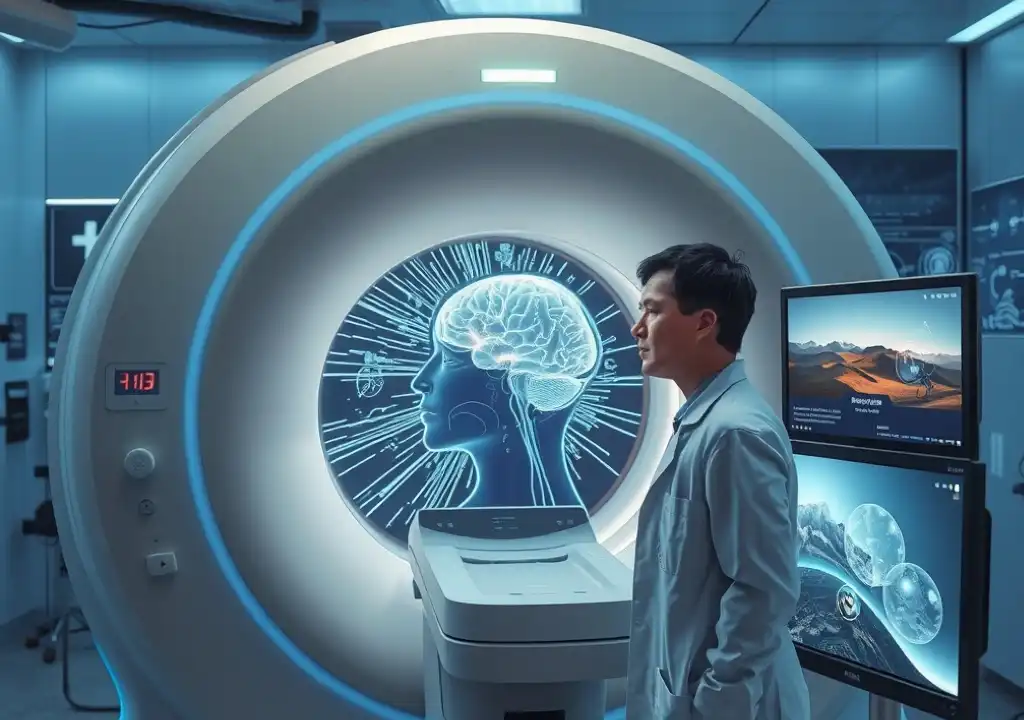Tokyo, Japan – Yu Takagi was taken aback as he witnessed artificial intelligence decode a subject’s brain activity to recreate images of what they were seeing on a screen. Takagi, a 34-year-old neuroscientist at Osaka University, was left in awe after watching the results unfold. “I remember the first time I saw these AI-generated images,” Takagi shared. “I went to the bathroom, looked in the mirror, and thought, ‘Okay, this is normal. Maybe I’m not going crazy.’”
Takagi and his team used Stable Diffusion (SD), a deep learning AI model developed in 2022, to analyze brain scans of participants who viewed up to 10,000 images while in an MRI machine. By creating a model that could “translate” brain activity into readable data, Stable Diffusion generated high-quality images that closely resembled what the subjects had seen, despite the AI never being trained with the original images.
“We didn’t expect these results,” Takagi admitted.
While the breakthrough is significant, Takagi emphasizes that this isn’t true mind-reading. The AI can only recreate images of things the subjects have viewed and cannot interpret dreams or imaginations, a claim Takagi says is still too optimistic to pursue.
Ethical Concerns Over AI’s Potential Uses
Despite the promising results, the development raises concerns about how such technology might be used in the future. In response to the rapid advancements in AI, tech leaders like Elon Musk and Steve Wozniak recently signed an open letter urging a pause on AI development due to its potential societal risks.
Takagi acknowledges that the ethical concerns around mind-reading technology are valid, particularly regarding the possibility of misuse. “Privacy is the most important issue for us,” Takagi said, expressing concerns about the potential for governments or institutions to misuse such technology. “High-level discussions are necessary to ensure these technologies aren’t misused.”
Takagi and Nishimoto’s paper has received significant attention, ranking in the top 1 percent of research papers in terms of engagement, according to Altmetric. It has also been accepted for presentation at the Conference on Computer Vision and Pattern Recognition (CVPR), a prestigious event for neuroscience breakthroughs.
Barriers to Real Mind Reading
However, Takagi remains cautious about getting too excited over the results. He highlights that two key obstacles prevent genuine mind-reading: limitations in brain-scanning technology and AI itself. Despite advances in tools like Electroencephalography (EEG) and fMRI, scientists believe it could take decades before we can reliably decode imagined visual experiences.
Takagi’s study required participants to spend up to 40 hours in an fMRI scanner, a process that is both expensive and time-consuming. Additionally, brain interfaces face challenges in recording stable data, with electrical noise disrupting signals. Researchers at the Korea Advanced Institute of Science and Technology have noted that current recording methods struggle to provide high-quality results due to the delicate nature of brain tissue.
Limitations of Current AI Technology
While Takagi remains optimistic about AI’s potential, he is more cautious regarding brain-computer technologies. He sees current neural interfaces as a bottleneck, with significant challenges still ahead. “I’m optimistic for AI, but I’m not optimistic for brain technology,” he explained.
Though Takagi and Nishimoto’s framework could eventually work with other brain-scanning devices like EEG or even invasive brain-computer interfaces like Neuralink, he believes that there is currently limited practical application for the technology. For example, the model cannot yet be transferred between different subjects because brain shapes vary from person to person.
Future Applications and Ethical Dilemmas
Takagi envisions a future where their work might be applied in clinical settings, communication, or even entertainment. However, as Ricardo Silva, a professor of computational neuroscience at University College London, points out, it’s difficult to predict practical applications at this early stage. He suggested that the technology might be used to detect Alzheimer’s disease or assess patients’ cognitive functions based on brain activity during visual navigation tasks.
Silva also voiced concerns about the ethical implications of such technology, especially as it could be used for purposes beyond medical applications, such as marketing or legal cases. “The key issue is transparency in how data is used,” Silva noted. “It’s one thing to use it for clinical purposes, but completely different if it’s applied for commercial or legal reasons without full consent.”
Despite these concerns, Takagi and Nishimoto are forging ahead with their research, planning the next phase of the project to improve their image reconstruction techniques and explore other potential applications. “We’re working on a much better reconstruction method, and it’s advancing quickly,” Takagi shared, signaling that their exploration into brain activity and AI is far from over.

